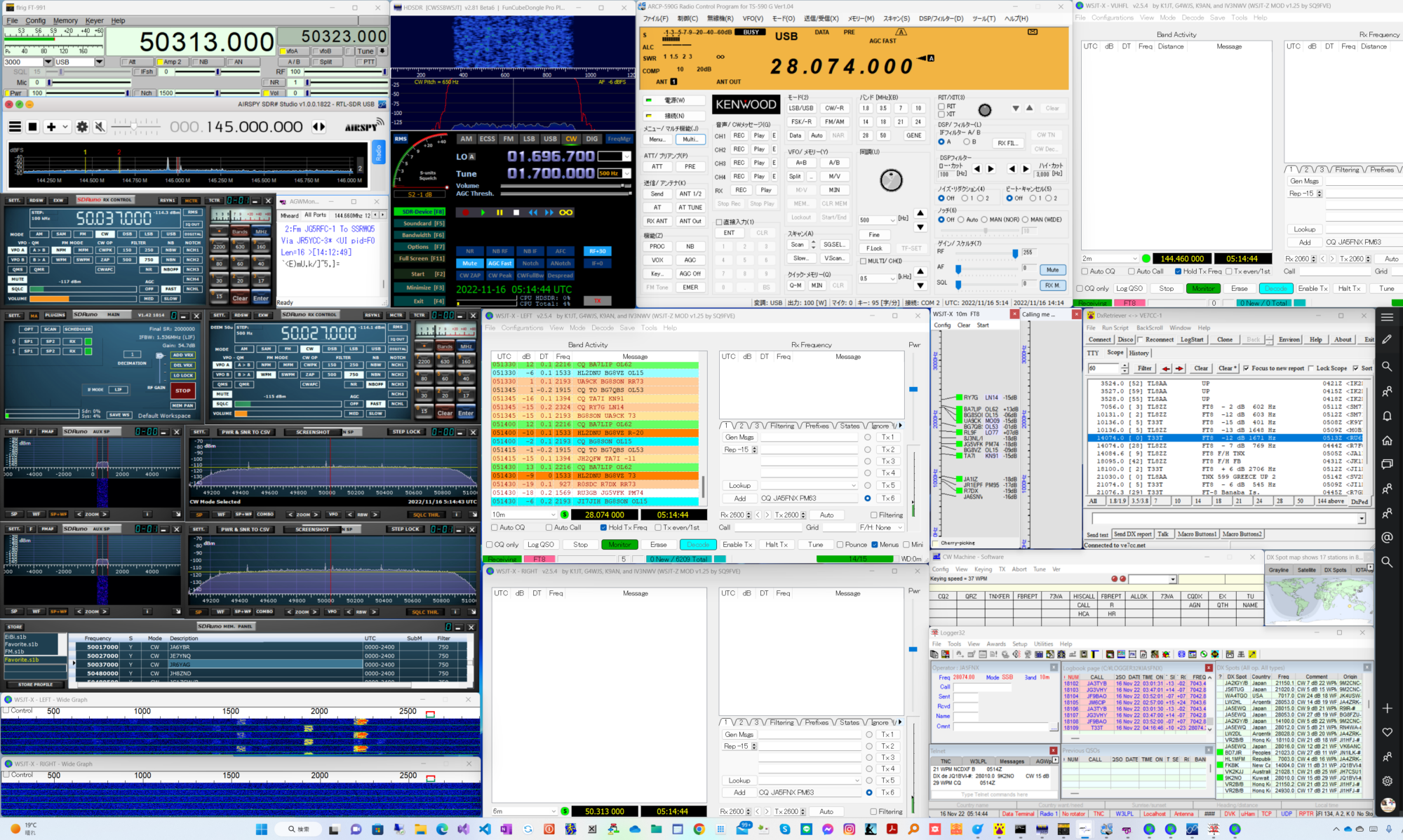To: Users of FT8
From: WSJT Development Team
Subject: IMPORTANT NOTICE ABOUT FT8
If you are building WSJT-X for yourself from source code, you may now upgrade to r7812 and recompile. You will then have access to the latest version of FT8 plus some new features for setting default operating frequencies by mode and IARU region. The program built in this way will be called WSJT-X v1.7.1 r7812.
Note that essentially the same program will soon be packaged for wider distribution as as “WSJT-X Version 1.8.0-rc1” (release candidate 1), see below).
Remember that FT8 in code revisions 7812 are higher is NOT COMPATIBLE with that in 7782 and earlier. To use FT8 you must upgrade to r7812.
If you see FT8 signals that do not decode, they may be using the obsolete protocol.
About the Default Working Frequencies
=====================================
FT8 will likely be popular with MF and HF users as well as the VHF multi-hop sporadic-E DXers it was designed for. After consultation with the user community, we have reworked the suggested operating frequency defaults to include FT8. This was not easy on every relevant band; where possible, we have suggested a 2 kHz range for exclusive FT8 use. (Exclusivity is important, as the T/R period is 15 s which will not mix well with mode that use one-minute sequences.)
In general the FT8 frequencies are set 2kHz below the current JT65 allocation. This should allow operation using a normal SSB filter width without too much interference from strong JT65 signals up the band. On some bands that has not been possible since JT65 sits at the lowest usable narrow band data mode frequency, when considering all international band plans.
For the 660 m and 2200 m bands we have not assigned separate frequencies for JT65/JT9/FT8, and just expect users to coordinate themselves. The numbers of active operators will probably be low enough that this will not cause issues.
For 160 m we assume that the JT65 and JT9 sub-bands can be squeezed to
1 kHz each, and FT8 can sit above using up to another 1 kHz.
Previous 80 m use of JT modes has done a disservice to JA operators, who have no privileges on the current WSPR/JT65/JT9 allocations. To correct this we have moved the allocations to a part of the band where JAs can operate. Obviously this change will impact other non-WSJT-X users, so for now we suggest that if you intend to operate on 80 m JT65/JT9/WSPR then you manually change the working frequencies in WSJT-X (“Settings->Frequencies”) back to the old allocations until a general availability release of WSJT-X v1.8.0 is published. This will allow time for other software teams to coordinate with us.
The old allocations are:
JT65 3.567 MHz
JT9 3.578 MHz
WSPR 3.5926 MHz
For 6 m we understand that the IARU Region 1 band plan is not to the liking of DX chasers around the world and largely ignored by Region 1 users. However we cannot reasonably continue to set working frequency suggestions that drive traffic to parts of the band that are not supposed to be used for narrow band data modes. The v1.8.0 release will allow Region-specific working frequencies as well as globally coordinated ones. Consequently we have set the Region 1 working frequencies roughly in line with the band plan. If you do not like the allocations then do not complain to us, but complain to your Region 1 band coordinator along with reasons why you think it should change. The proposed Region 1 working frequencies are usable globally wherever 6m data mode operation is permitted so we have set them as global rather than Region 1 specific. Region 2 and 3 operators will have both local and global frequencies offered.
Other changes are in line with current usage.
Finally, if you are waiting for pre-built installation packages:
We plan to post a release candidate for WSJT-X v1.8.0-rc1 configured for Windows, Linux, and OS X very soon — probably early next week. Thanks for your patience!
— 73, Joe, K1JT (for the WSJT Development Team)
